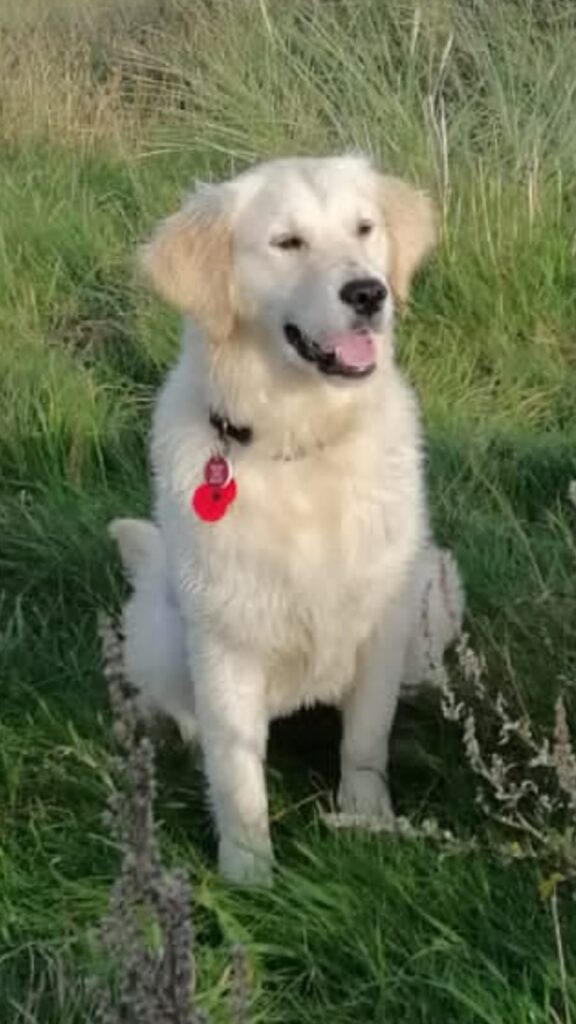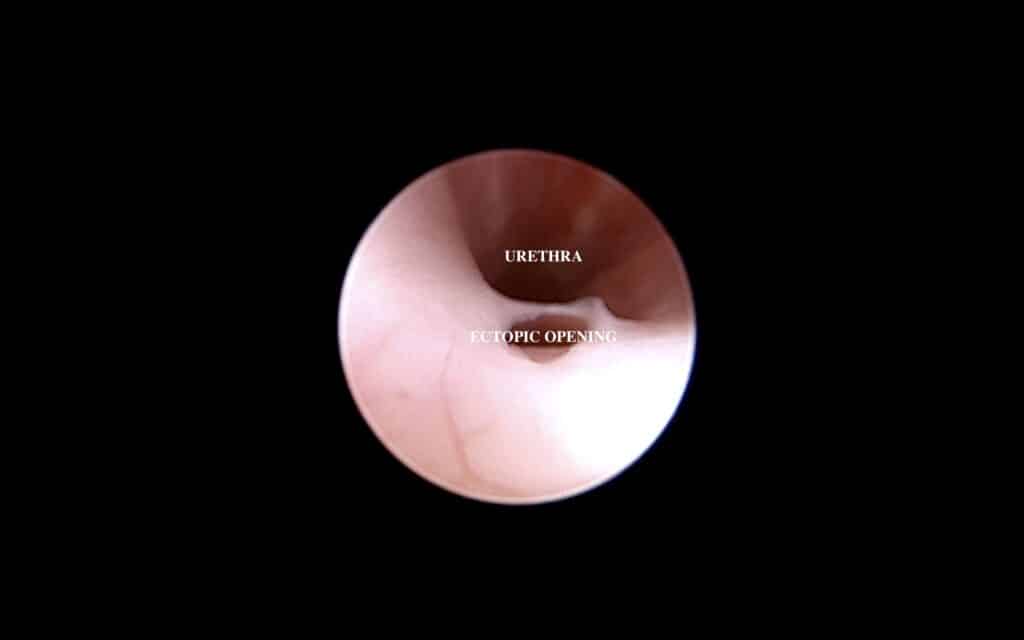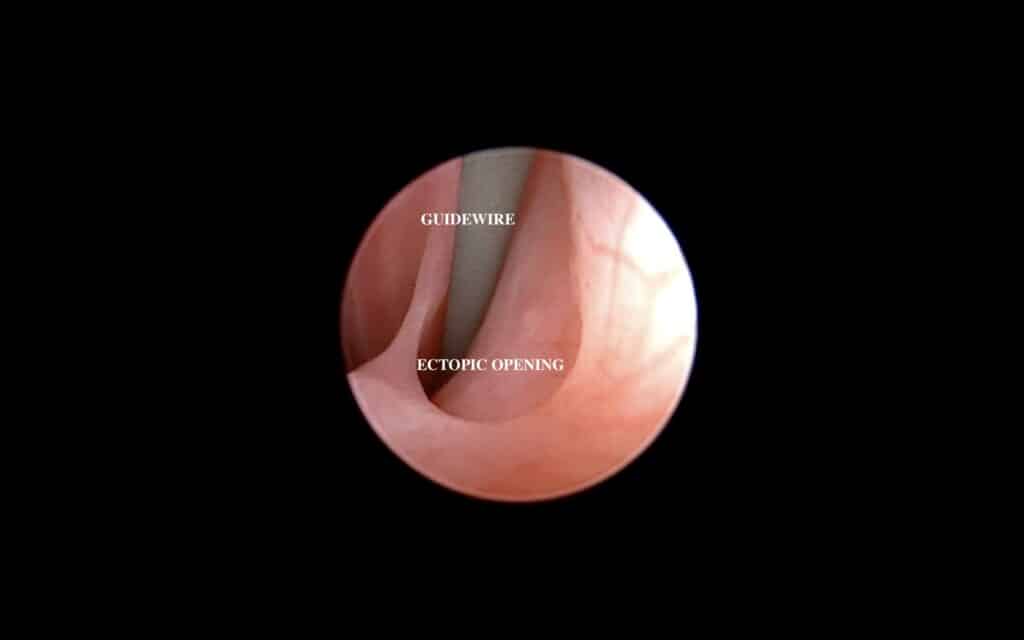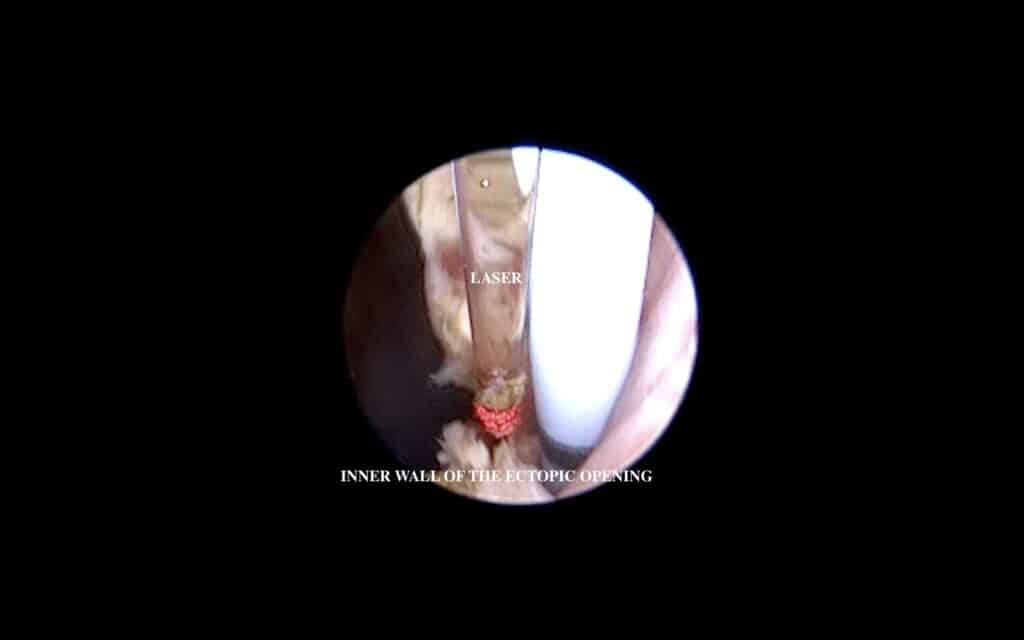Lady, a beautiful one year old Golden Retriever, was referred to us as she was suffering from urinary incontinence. Carla Asorey Blazquez, a Resident in our Internal Medicine team undertook some blood tests and an ultrasound scan which raised suspicion that Lady had an ectopic ureter and also that her kidneys were abnormal (renal dysplasia).

The ureters are the tubes which drain urine from the kidney to the bladder. Usually in dogs and cats, these tubes connect into the bladder. When a patient has an ectopic ureter, the tube bypasses the bladder and connects into the lower part of the urinary tract; usually the urethra (the tube which leads from the bladder to the outside) but can occasionally connect into the vagina. Lady’s ultrasound scan raised suspicion of one abnormal ureter but when Rachel Hattersley, our Head of Theatre and a Specialist in Small Animal Surgery, used a rigid camera to perform a cystoscopy (where a camera is used to assess the lower urogenital tract) the opening of both Lady’s ureters were abnormally positioned, although the left side was more abnormal. In Lady’s case, both ureters were seen to run in the outer wall of the neck of the bladder and the urethra (intra-mural) rather than completely bypassing it (extra-mural).
Rachel and the team performed a minimally invasive procedure (via the vulva) using a laser to return the openings of the ureters to their correct position in the bladder. They also divided a small septum which was dividing the opening into the vagina. This condition (when intra-mural) usually involves surgery to open up the bladder and create a new opening for the ureter in the bladder but as laser ablation is a minimally invasive technique, the recovery period was much shorter and Lady was ready to go home the next day.


Lady could not have undergone this procedure without the assistance of a large number of experienced Registered Veterinary Nurses (RVNs). In our surgical ward, RVNs (both our day and night teams) are responsible for pre-operative and post-operative monitoring of patients such as Lady. They monitor incisions, manage drains/place and monitor intravenous and urinary catheters/replace dressings and monitor analgesia requirements whilst ensuring patients receive the correct nutrition and of course provide all the love and care they would receive at home.
Our theatre nursing team are responsible for managing our theatre spaces, preparing patients for surgery, monitoring anaesthesia, setting up and running the fluoroscopy machine and portable x-ray machines, placing arterial and venous catheters and scrubbing in on surgical procedures. Finally not forgetting our anaesthesia nurses who both plan and undertake anaesthesia in some of our patients under the guidance of our specialist-led anaesthesia team.

The owner was very grateful and reported that Lady’s urinary incontinence has very much improved following surgery and with the addition of an oral medication called Propalin.
